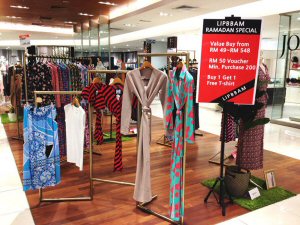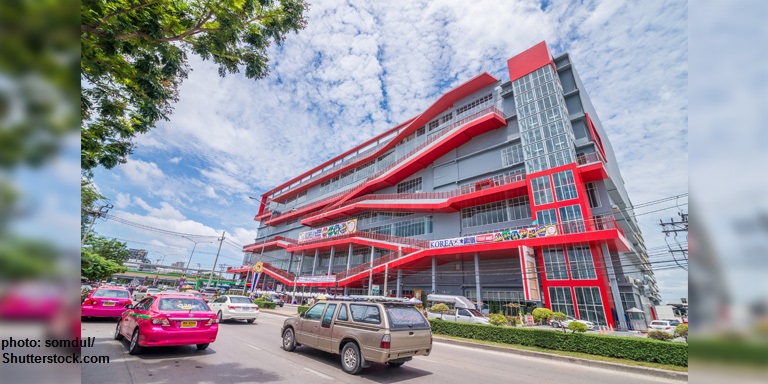ASEAN fashion scene

The ASEAN fashion market is greatly influenced by the region’s rich history, diverse customs and religious beliefs. Chinese, Indian, Portuguese, Spanish, American and indigenous Malay cultures all play a part in contemporary fashion in the region.Indonesians wear western-style clothing on a daily basis but tend to dress more conservatively because there is a large Muslim population. Fashion in Malaysia can be described as a clash of traditional Malay garments, conservative Muslim clothing and western influences. Thais are very open to various clothing styles and have an insatiable appetite for new fashion brands that symbolise a specific lifestyle and display a unique character. The HKTDC’s ASEAN Middle-income Consumer Survey showed ASEAN middle-class consumers allocated a substantial amount of discretionary spending to fashion. Business attire accounted for 28% of spending, casual wear 26%, shoes 22%, accessories 12%, travel goods and handbags 8%, and spectacles 4%.Different cultures in ASEAN form a gigantic melting pot of couture. Fashion trends are characterised by tradition meets modernity, streetwear meets high fashion, and sport meets style.Fast fashion has taken the world by storm, and ASEAN is no different. Key players in this segment are H&M, Zara, Uniqlo, and Forever 21. Luxury houses dominate the high-end market and try to woo affluent tourists. Notwithstanding fierce competition, many local designers have successfully broken out, due to their deeper understanding of consumer tastes and behaviour.
Fashion distribution channels

Concept stores, department stores and multi-brand stores are dominant distribution channels for fashion in ASEAN. Aside from bricks-and-mortar retailers, e-commerce has quickly become an independent force in the industry.Concept stores sell well-curated products matching that store’s special theme. Concept stores often evoke a lifestyle appealing to a specific target audience. As concept stores are about discovery and experience, they constantly seek unique items to add corresponding accessory labels to complete their product offerings. Many overseas fashion designers and brands have found homes in these concept stores, some of them having started out as outsourced designers for a special project.
Concept stores are a curated platform and the items they seek are:• innovative and original; something a little different
• a range of stylish and quality products
• from a brand built around a concept
• from suppliers who can prove their production capacity and quality controlDepartment stores’ biggest assets are their card memberships. Through customer loyalty programmes and good after-sales service, department stores cultivate and maintain strong relationship with these VIP members. Consumers visit department stores nowadays not just for shopping, but also to get a snapshot of current fashion trends.As millennial-generation shopping trends in Indonesia have shifted to speciality outlets and online stores, Indonesia’s largest department store chains such as Matahari and Ramayana continue to transform their retail strategy in response to this shifting consumer behaviour.Department stores remain an important fashion distribution channel in Malaysia. Major chains such as Parkson and Metrojaya continue to upgrade product portfolios to include a wider selection of brands attractive to middle- and high-income consumers.In Thailand, the department store is a landmark and a focal point for the local community. Central Group has Central Department Store, Robinson Department Store and Zen, as well as managing Marks & Spencer and MUJI outlets in the country. The Mall Group operates The Mall department stores, Siam Paragon, The Emporium and The EmQuartier.The advantages of selling to department stores are that suppliers can expect the biggest volumes and sales turnover, greater brand awareness and validation, as well as more visibility to other buyers. However, the downsides are that department stores do not purchase wholesale, and require a higher commission and extended payment terms.Multi-brand fashion stores are retailers that offer a variety of fashion brands, possibly including their own label, ranging from apparel to accessories. ASEAN countries have seen rapid growth in multi-brand stores because consumers need avenues where diverse fashion items are readily accessible.ASEAN consumers are no longer satisfied with standard fashion goods. To stay relevant, multi-branded retailers are constantly in search of new brands and items that differ from the standard in order to create a robust and immersive lifestyle. This offers ample opportunities for designer-and-retailer collaborations in special capsule collection projects.E-commerce penetration comprises just 3% of retail sales in ASEAN. The diversity of ethnicities, languages and consumer preferences, underdeveloped infrastructure, as well as consumers’ reluctance to use digital payment methods are key constraints. Countries with less severe physical infrastructure constraints, such as Malaysia and Thailand, have seen faster growth in online shopping. Indonesia has strong long-term e-commerce potential given its large and rapidly growing middle class and young consumer market.ASEAN consumers are technology “leapfroggers” who skipped desktops and went straight to mobile phones. No online platform has achieved more than 20% consumer penetration in any country. Today’s ASEAN fashion e-commerce market includes classified sites (Mudah and OLX), consumer to consumer (Tarad, Tokopedia, Bukalapak, Shopee), business to consumer (Lazada, Zalora, MatahariMall) and brands’ own sites (H&M and Adidas). Legacy retailers such as Central Group and MAP Group have also embraced e-tailing by creating their own online platforms.As a market practice, sellers on third-party marketplaces do not pay listing fees but pay a commission only when someone buys their products − although Shopee currently does not take commission from transactions. Both Lazada and Shopee provide support for sellers with cross-border logistics programmes and multiple payment methods.The high mobile-phone penetration in ASEAN, together with consumer reluctance to share financial and personal information online and the fact that less than 20% of the population (except in Singapore) use either debit or credit card to make payments, explain why social commerce has boomed.In Thailand, the vast majority of online shoppers buy through social media, making it the biggest social-commerce market in the world. Kerry Express in Thailand confirmed that 65% of its deliveries are consumer to consumer (C2C), that is, mostly social commerce. Facebook has chosen Thailand as the first test base for social commerce payments and Facebook Shop. However, social commerce is tricky to measure because while the negotiation and transaction happen online, payment is typically offline.For fashion and accessory items, selling through Instagram and Facebook is also on the rise. Social commerce presents a great opportunity for emerging fashion and accessories brands to test consumer markets in ASEAN without too much financial commitment.
Market entry methods
Luxury fashion houses such as Louis Vuitton, Christian Dior, Chanel and Prada usually enter the ASEAN market by opening self-owned flagship stores to maintain control of their brand image. Sportswear brands, such as Nike and Adidas, mostly expand through franchising. Fast fashion brands such as H&M, Zara and Uniqlo are now joining luxury houses to open branded retail shops in major cities across ASEAN.Apart from global brands, most overseas fashion suppliers distribute their products mainly in multi-brand fashion stores and mid- to high-end department stores. Hong Kong fashion suppliers can approach leading retailers which are actively looking for fresh designs and new items to complete their product offerings. Concept stores such as Thailand’s Jaspal present good opportunities for niche and new-face designers. These concept stores are usually more receptive to collaboration ideas, as long as the designer can come up with an innovative and unique concept.Up-and-coming fashion designers can also approach department stores with their portfolio or propose a joint promotion event, such as a trunk show – an event where vendors present merchandise directly to store personnel or customers. Key department stores have flown in overseas designers who are cutting-edge but not well known to ASEAN consumers.One major shortcoming of selling direct to retailers is that suppliers have to sell on consignment and major department stores ask for up to 60 days in credit. Extended payment terms do not give much flexibility for suppliers to manage cash flow effectively.When selling direct to retailers, overseas suppliers need to take care of delivery to retailers’ stores or distribution centres, retail merchandising and display, marketing and promotion plans, as well as on-premise sales, each of which requires initial setup and constant attention.An alternative way to minimise initial investment in a new market is selling through a local agent or distributor. Manufacturers or suppliers can quickly start retail penetration in a selected ASEAN country through the distributor’s network without involving company resources in channel building.Distributors can help finance transport and handle customs clearance. They may have a system in place to track inventory in the distribution centre and individual retail stores, and help replenish merchandise in a timely manner. They also understand the culture, consumer tastes and shopping behaviour in the local market. An experienced local distributor in ASEAN can be very valuable, as each ASEAN country has its unique mix of ethnicity, language and religion.The downside of working with a local distributor is that in return for taking on the supplier’s trade-related risks and burdens, distributors will expect heavy discounts and generous credit terms. Suppliers may also lose some control over the way their products are marketed and priced, while distributors often demand a long period of geographic exclusivity.Selling direct to ASEAN consumers via e-commerce will be the next big wave in cross-border trade. Hong Kong fashion brands and suppliers seeking a share of the high-growth fashion market in ASEAN must not ignore the online channels that sell direct to consumers, even if they are currently distributing through distributors and/or retailers.Selling direct to consumers has many benefits. Time to market is significantly decreased; brands can have complete control of their brand image and pricing, and brands gain access to consumer data.
Be prepared!
Obtaining trade finance is a challenge facing small businesses in Hong Kong. Now, SMEs can find institutes to fund their retail orders based on the purchase order or invoice from an overseas buyer.E-commerce sellers cannot accept overseas orders until they find an answer to cross-border payments. Payment solution providers offering one-stop secure online payment services that support multi-delivery channels and multi-currencies can assist. AsiaPay, PayEase, and NTT Com Asia are examples.Hong Kong companies widely use regional e-fulfilment hubs combined with cross-border shipping to operate e-commerce sales into the fragmented ASEAN markets. Many companies choose Singapore as a regional e-fulfilment hub because the city state is particularly cross-border friendly, with low customs tax, a mature infrastructure and transparent customs regulations. Malaysia is another choice for a regional distribution hub, as land is much cheaper and operational and labour costs substantially lower than in Singapore.There are ample marketing avenues for fashion brands with different budgets. Large brands can choose to take part in large-scale iconic fashion shows in the region, such as the Bangkok International Fashion Fair and Kuala Lumpur Fashion Week. Smaller brands can showcase their collections in private fashion events organised by fashionistas and public relations consultants. Partnering with a retailer to host a trunk show is another alternative.Social media has become an essential tool for marketing, public relations and customer service. Brands need to make sure that their social media content is timely, engaging and relevant to their target market. They can also hire influencers to gain immediate access to the right customers.The full research report is here.
Related link
HKTDC Research

